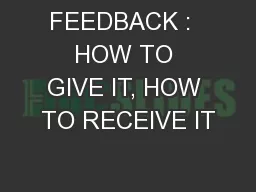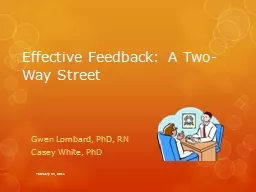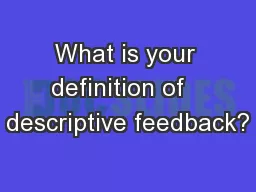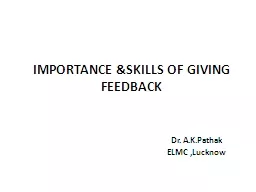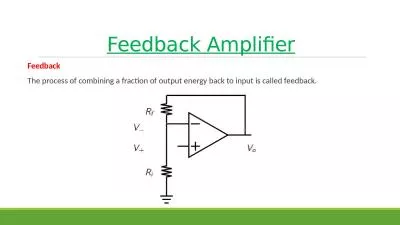PPT-FEEDBACK : HOW TO GIVE IT, HOW TO RECEIVE IT
Author : conchita-marotz | Published Date : 2018-02-24
in the USA and the business world What is feedback What is the main goal of sharing feedback What are the two forms of feedback Which of the two forms is more
Presentation Embed Code
Download Presentation
Download Presentation The PPT/PDF document "FEEDBACK : HOW TO GIVE IT, HOW TO RECEI..." is the property of its rightful owner. Permission is granted to download and print the materials on this website for personal, non-commercial use only, and to display it on your personal computer provided you do not modify the materials and that you retain all copyright notices contained in the materials. By downloading content from our website, you accept the terms of this agreement.
FEEDBACK : HOW TO GIVE IT, HOW TO RECEIVE IT: Transcript
Download Rules Of Document
"FEEDBACK : HOW TO GIVE IT, HOW TO RECEIVE IT"The content belongs to its owner. You may download and print it for personal use, without modification, and keep all copyright notices. By downloading, you agree to these terms.
Related Documents

